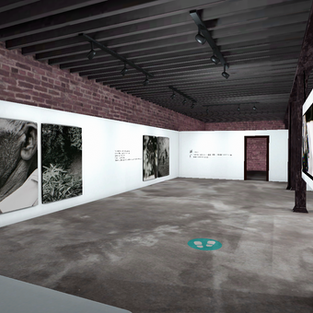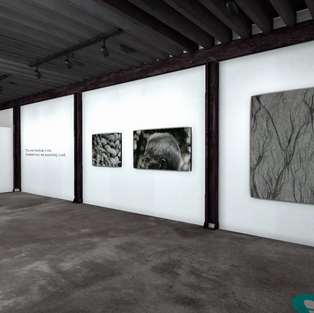Virtual Exhibition Proposal
- Rose mary

- Sep 8, 2020
- 4 min read
Updated: Sep 9, 2020
Short Bio
Rose Mary is a 24-year-old Fine Art Photographer from India but currently based in Plymouth, UK. She considers the opportunity to experience two extremely diverse cultures and struggles to fit or choose one another as her major strength. Rose is primarily focused on exploring the relationship between photographs and emotions. The initial step of her creative process involves research about the main subject to identify and understand the emotions and to adapt a vantage visual language to convey it well. For the past year, Rose has been working on projects based on casteism in India that violates social rights and encourage discrimination. She aims to educate and create awareness on this brutal system which is very under-discussed in India. Rose was nominated for Social justice award hosted by Plymouth College of Art, for her project on Casteism in India.
-Accompanying text
Exhibition Title: ''Voices.
Artist: Rose Mary
voice
/vɔɪs/
1.
the sound produced in a person's larynx and uttered through the mouth, as speech or song.
2.
a particular opinion or attitude expressed.
Indian caste - system has taken away the voices of so many. These people are considered the "lowest" in India. They are the Dalits. This age-old system has only strengthened in recent years. Dehumanising atrocities by the "upper" caste continues to haunt these communities. In past years, young musicians and artists have been coming forward to produce protest art/music movements to educate and unite people against these brutalities.
This project explores the Dalit reality of three generations. "Voices of three generations."
Mr Neelakandan lives in Malappuram, a district in Northern Kerala. He shares how life was 70 years ago for a person who hails from a Dalit community. Along with the video narrated by Mr Neelakandan and portraits, this project collectively questions the fragility and instability of the false reality lived by the "upper" caste communities of India.
Allocation of labour based on caste was and is practised in India. People who belong to the "lower" strata of the caste system are restricted to jobs that are considered as "filthy" or "too polluting" to the upper castes. From farming to manual scavenging, Dalits face abuse and poor or no remuneration. Even though the majority of the Dalits undertook tasks related to agriculture, none of them owned a single inch of land. Neelakandan was a cattle rearer who used to work long hours. He later was taken away to a different city by his father due to the abuse from the landlord. When analysing the characteristics of the occupations allocated to the marginalised communities, everything is closely associated with nature. By creating diptychs, this project also explores the similarities between a Dalit man and nature.
These photographs are also a reminder of the senseless caste system, where Dalits are "believed" to have come from Brahma's (Hindu god) legs.
Exhibition
Now more than ever is the time to make art accessible to everyone. Virtual exhibitions are extraordinary things when the whole world is under shut down, and people are looking for ways to keep themself engaged. It is now possible to reach beyond the traditional galleries through the help of virtual exhibitions. Before, cyberspaces were considered as a secondary option for expanding the audience. Virtual exhibitions enable the artist to make their work available to view for anyone from any part of the world in a well-presented way.
For my Virtual exhibition, I aim to create a space that is intriguing, inspiring and educating at the same time. I propose to create twelve A0 prints shot on Canon 500D along with a video installation. The video installation will be played on two sides of a separating wall at the same time. I want the voice of the protagonist to echo throughout the space. There will be ambient sound played in a very minimal volume to make the experience engaging. The whole exhibition will be made available in an A5 size book form, free of charge to the viewers to keep. The book will contain QR codes that scan to the video installation played on youtube and my website. When entering the exhibition on the left, there will be a short introduction text that explains the exhibition, and on the right, there will be a short definition of the term "Voice".
I chose to use A0 prints because I believe there is impact, vision, and subtlety in images that just cannot be experienced to its full potential through a small print, especially this project. Larger prints provide richer experience by providing more depth and finer detailing to the viewer. I will be using cool white light as the images are black and white. The images will be put together in pairs as they are diptychs.
There will be QR code placed on the way to the exit, that scans to my previous project titled ''Redemption''. To get a clear picture of Casteism in India, I believe it will be beneficial to walk through my first project on Casteism, which explains it in deeper extend.
This exhibition is inspired by a group of artists/ sculptors/ filmmakers/ photographers whose works are exhibited in the Museum of Goa. The whole exhibition was a collection of many artists, most of the works based on Goa and his history. But the unique way of displaying and delivering them was very intriguing. Museum of Goa is on one of the largest Contemporary space in India, founded by Subodh Karkar in 2015. They celebrate local history and people through contemporary art and make it available to a broader audience. Most of the works are permanent exhibitions, enabling the audience to go back and experience a new art experience every time. The placing of each artwork is thoughtfully done to give importance to each piece. There is no ambient music played but the sound from each artwork echos very minimally throughout the museum.
I hope to present a design that is easy for the audience to understand, interact, communicate and is accessible to everyone who needs art.









Comments